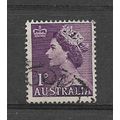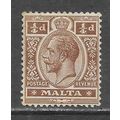Palma de Mallorca / Majorca - Almudaina Street - postcard c.1970s
- Condition : Used
- Dispatch : 2 Days
- Brand : None
- ID# : 130101340
- Quantity : 1 item
- Views : 215
- Location : United Kingdom

- Seller : justthebook (+1703)
- Barcode : None
- Start : Wed 09 Jul 2014 12:01:13 (EDT)
- Close : Run Until Sold
- Remain : Run Until Sold
Checks/Cheques
 for 1 item(s) edit
for 1 item(s) edit
Shipping Calculator
More Listings from This Seller view all
Seller's Description
- Postcard
- Picture / Image: Almudaina Street, Palma de Mallorca, Spain
- Publisher: Subirats Casanovas
- Postally used: no
- Stamp: n/a
- Postmark(s): n/a
- Sent to: n/a
- Notes / condition:
Please ask if you need any other information and I will do the best I can to answer.
Image may be low res for illustrative purposes - if you need a higher definition image then please contact me and I may be able to send one.
------------------------------------------------
Postage & Packing:
Postage and packing charge should be showing for your location (contact if not sure).
No additional charges for more than one postcard. You can buy as many postcards from me as you like and you will just pay the fee above once. (If buying postcards with other things such as books, please contact or wait for invoice before paying).
Payment Methods:
UK - PayPal, Cheque (from UK bank) or postal order
Outside UK: PayPal ONLY (unless otherwise stated) please. NO non-UK currency checks or money orders (sorry).
NOTE: All postcards are sent in brand new stiffened envelopes which I have bought for the task. These are specially made to protect postcards and you may be able to re-use them. In addition there are other costs to sending so the above charge is not just for the stamp!
I will give a full refund if you are not fully satisfied with the postcard.
----------------------------------------------
Text from the free encyclopedia WIKIPEDIA may appear below to give a little background information (internal links may not work) :
*************
Palma (/'p??lm?/, Catalan: ['pa?m?], Spanish: ['palma]), in full Palma de Mallorca,[1] is the major city and capital city of the autonomous community of the Balearic Islands in Spain.[2] It is situated on the south coast of the island on the Bay of Palma. As of the 2009 census, the population of the city of Palma proper was 401,270, and the population of the entire urban area was 517,285, ranking as the twelfth largest urban area of Spain. Almost half of the total population of Majorca live in Palma. The Cabrera Archipelago, though widely separated from Palma proper, is administratively considered part of the municipality. Its airport, Son Sant Joan, serves over 22 million passengers each year. The Marivent Palace was offered by the city to the then Prince Juan Carlos I of Spain. The royals have since spent their summer holidays in Palma.
Palma was founded as a Roman camp upon the remains of a Talaiotic settlement. The turbulent history of the city saw it the subject of several Vandal sackings during the fall
After the conquest of Majorca, it was loosely incorporated into the province of Tarraconensis by 123 BC; the Romans founded two new cities: Palma on the south of the island, and Pollentia in the northeast - on the site of a Phoenician settlement. Whilst Pollentia acted as port to Roman cities on the northwestern Mediterranean Sea, Palma was the port used for destinations in Africa, such as Carthage, and Hispania, such as Saguntum, Gades, and Carthago Nova. Though no visible remains of this period are seen in present day Palma, archaeological discoveries still occur whenever excavating under the city centre.
Though the period between the fall of the Western Roman Empire and the Muslim conquest is not well understood (due to lack of documents), there is clear evidence of a Byzantine presence in the city, as indicated by mosaics found in the oldest parts of the Cathedral, which was in early medieval times a paleo-Christian temple.
Between 902 and 1229, the city was under Islamic control. It remained the capital of the island and it was known as Medina Mayurqa (which in Arab means City of Mallorca).
Under the Caliphate[edit]The arrival of Moors in the Balearic Islands occurred at the beginning of the 8th century. During this period, the population developed an economy based on self-sufficiency and piracy, and even showed evidence of a relative hierarchy. The dominant groups took advantage of the Byzantine withdrawal due to Islamic expansion, to reinforce their domination upon the rest of the population, thus ensuring their power and the gradual abandonment of Imperial structures.
In 707, a Muslim fleet, under the command of Abd Allgaht ibn Musa, son of the governor of Ifriqiya, Musa ibn Nusayr, stopped at the island. It appears that Abd Allah convinced the factional powers of the city to accept a peace treaty. This treaty granted, in exchange for a tax, respect for social, economic and political structures to the communities that subscribed it, as well as the continuity of their religious beliefs..
After 707, the city was inhabited by Christians who were nominally in allegiance to the sovereignty of the Caliphate of Damascus, yet who, de facto, enjoyed an absolute autonomy. The city, being in Majorca, constituted an enclave between western Christian and Islamic territories, and this attracted and encouraged increased levels of piracy in the surrounding waters. For wide sectors of the city's population, the sacking of ships (whether Muslim or Christian) which passed through Balearic waters, was the first source of riches during the next fifteen decades. Eventually, the continued piracy in the region lead to retaliation by Al-Andalus which launched its naval power against the city and the whole of the Islands. The Islands were defended by the emperor Charlemagne in 799 from a Saracen pirate incursion.
In 848 (maybe 849), four years after the first Viking incursions had sacked the whole island, an attack from Córdoba forced the authorities to ratify the treaty to which the city had submitted in 707. As the city still occupied an eccentric position regarding the commerce network established by the Caliph in the western Mediterranean, the enclave was not immediately incorporated into Al-Andalus.
While the Caliphate of Córdoba reinforced its influence upon the Mediterranean, the interest of Al-Andalus for the city increased. The logical consequence of this evolution was the substitution of the submission treaty by the effective incorporation of the islands to the Islamic state. This incorporation took place in the last years of the Emirate. a squad under the command of Isam al-Jawlani took advantage of the instability caused by several Viking incursions and disembarked in Majorca, and after destroying any resistance, incorporated Majorca, with Palma as its capital, to the Córdobese dominions.
The incorporation of the city to the Emirate sets the basis for a new social organisation, far more articulated and complex than before. Commerce and manufacture developed in a manner that was unknown previously. This caused a considerable demographic growth, thereby establishing Medina Mayurqa as one of the major ports for trading goods in and out of the Caliphate of Córdoba.
type=printed postcards
theme=topographical: rest of the world
sub-theme=europe
county/ country=spain
number of items=single
period=1945 - present
postage condition=unposted
Listing Information
| Listing Type | Gallery Listing |
| Listing ID# | 130101340 |
| Start Time | Wed 09 Jul 2014 12:01:13 (EDT) |
| Close Time | Run Until Sold |
| Starting Bid | Fixed Price (no bidding) |
| Item Condition | Used |
| Bids | 0 |
| Views | 215 |
| Dispatch Time | 2 Days |
| Quantity | 1 |
| Location | United Kingdom |
| Auto Extend | No |




















